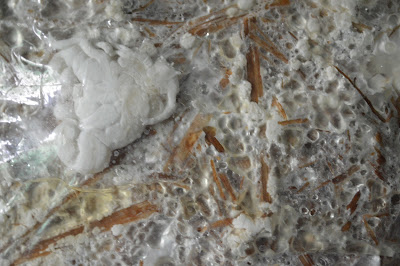FOUR STEPS FOR SUCCESSFUL MUSHROOM FARMING BUSINESS.
Step 1: Determine your starting size.
Begin with a clear goal of how many mushrooms you want to grow. This should include the amount of pounds of mushrooms per week, what species you want to grow, and the capacity you have for investment in cash flow.
Realize that the mushroom poundage you want to grow dictates the space you will need. These numbers will also give you an idea of how many customers you will need to sustain your business and how many mushrooms you will need to have in the production at all times.
Furthermore, the species you plan on growing dictates the process and equipment you will need, and time it takes to grow. We recommend most people to start with oyster because of the quick crop cycle. Oyster mushrooms are aggressive colonizers that can outgrow contamination, making them a great mushroom to start with. They also offer a pretty high yield that can be grown in a variety of methods, like straw.
Step 2: Focus on learning mushroom farming technology.
There are lots of steps to learn and perfect for the indoor farming process opposed to outdoor mushroom growing. It’s important to focus your efforts on one or two species and mastering that, then diversifying from there. Don’t try to do it all from the beginning. Bringing in mushroom bags to work on your volume; then work with a variety of other species. More can be brought in-house once you have a grasp on these first steps.
Begin with a clear goal of how many mushrooms you want to grow. This should include the amount of pounds of mushrooms per week, what species you want to grow, and the capacity you have for investment in cash flow.
Realize that the mushroom poundage you want to grow dictates the space you will need. These numbers will also give you an idea of how many customers you will need to sustain your business and how many mushrooms you will need to have in the production at all times.
Furthermore, the species you plan on growing dictates the process and equipment you will need, and time it takes to grow. We recommend most people to start with oyster because of the quick crop cycle. Oyster mushrooms are aggressive colonizers that can outgrow contamination, making them a great mushroom to start with. They also offer a pretty high yield that can be grown in a variety of methods, like straw.
Step 2: Focus on learning mushroom farming technology.
There are lots of steps to learn and perfect for the indoor farming process opposed to outdoor mushroom growing. It’s important to focus your efforts on one or two species and mastering that, then diversifying from there. Don’t try to do it all from the beginning. Bringing in mushroom bags to work on your volume; then work with a variety of other species. More can be brought in-house once you have a grasp on these first steps.
Step 3: Have a clear vision and mission.
Having a clear vision will ultimately help in your decision making process. Our mission is: “Fighting back Against Malnutrition and Save lives”.
Having a clear vision will ultimately help in your decision making process. Our mission is: “Fighting back Against Malnutrition and Save lives”.
Step 4: Prioritizing is imperative to success in mushroom farming.
There are a lot of processes within commercial mushrooms farming. Don’t do them all from the start. Learn to prioritize and work only with the processes you need now, and don’t be afraid to fail. It’s good to have some minor failures to learn from in mushroom farming. Remember, patience and persistence is your biggest ally along the journey. Welcome to the Industry.
There are a lot of processes within commercial mushrooms farming. Don’t do them all from the start. Learn to prioritize and work only with the processes you need now, and don’t be afraid to fail. It’s good to have some minor failures to learn from in mushroom farming. Remember, patience and persistence is your biggest ally along the journey. Welcome to the Industry.
Mamaland Mushroom Farms (2015).
E-Mail:- Mamalandmushroomproject@gmail. com,
Phone: +255621080300.
Twitter/Facebook/Linkedin/ Google+:-
Mamaland Mushroom Farms.
Blog:- Mamalandmushroomproject. blogspot.com.
© Mamaland Mushroom Farms (2015).
E-Mail:- Mamalandmushroomproject@gmail. com,
Phone: +255621080300.
Twitter/Facebook/Linkedin/ Google+:-
Mamaland Mushroom Farms.
Blog:- Mamalandmushroomproject. blogspot.com.
© Mamaland Mushroom Farms (2015).














































